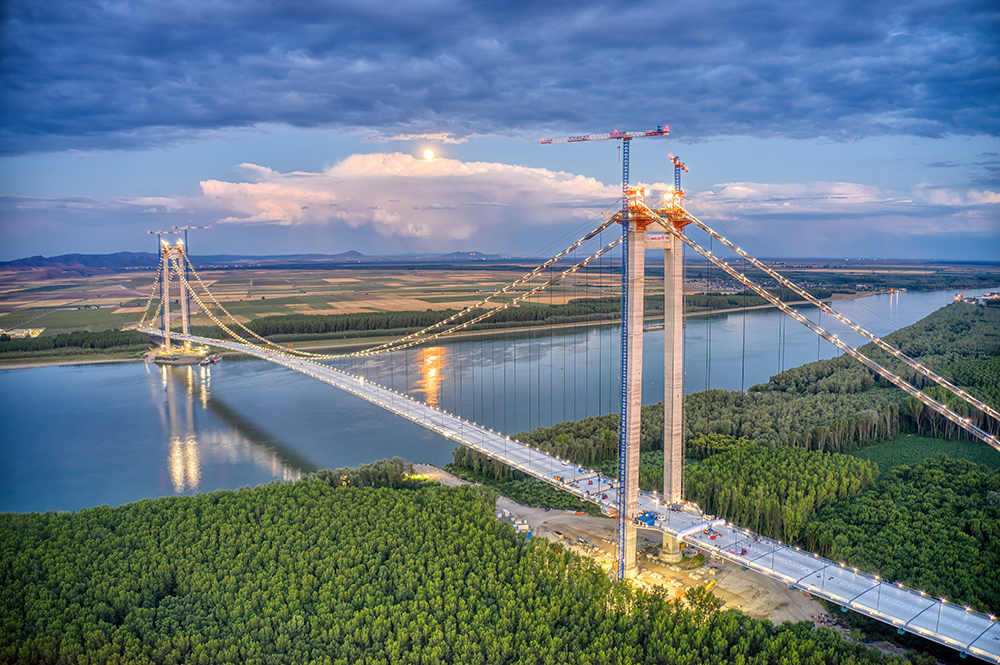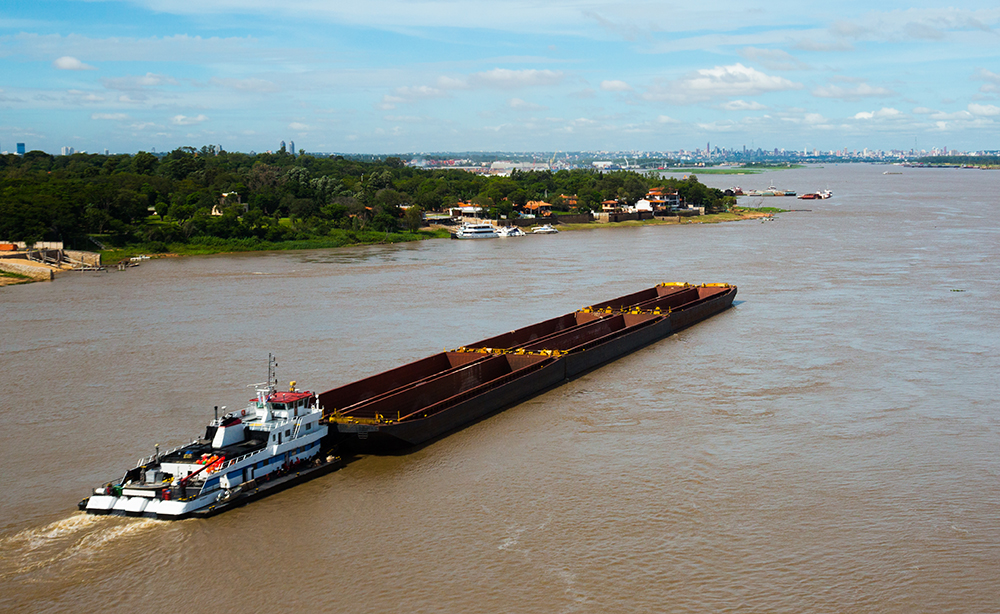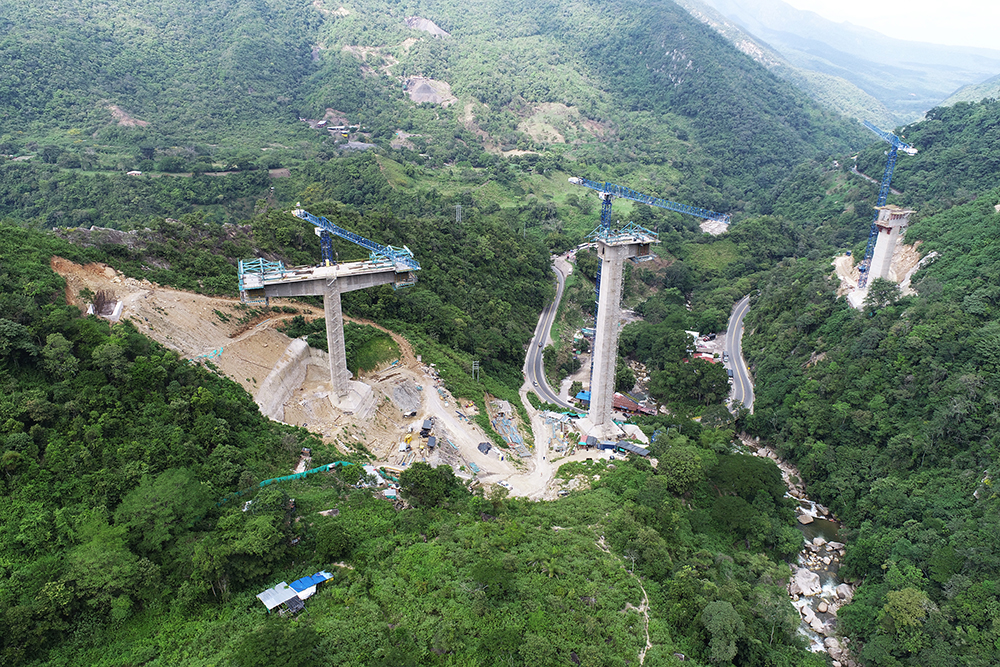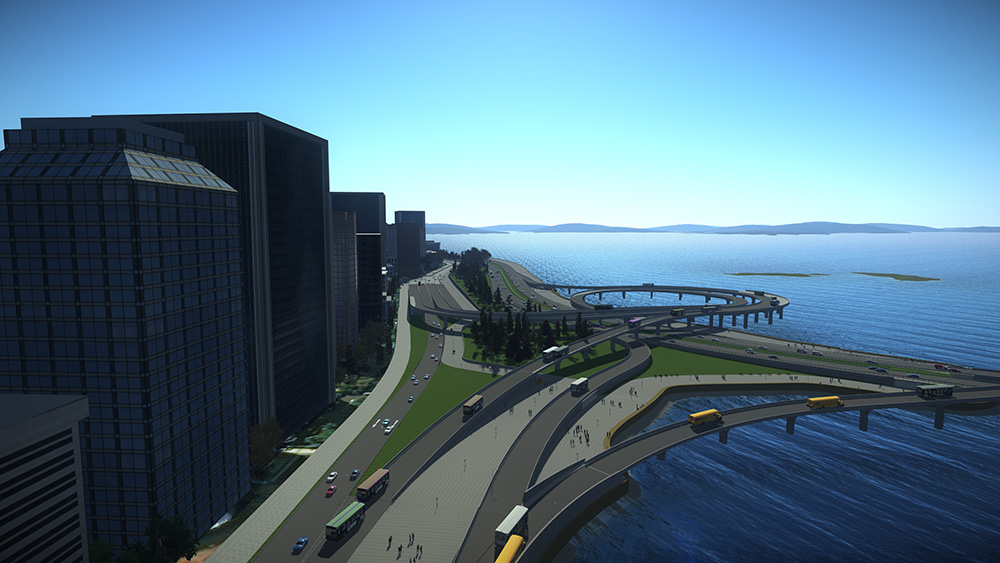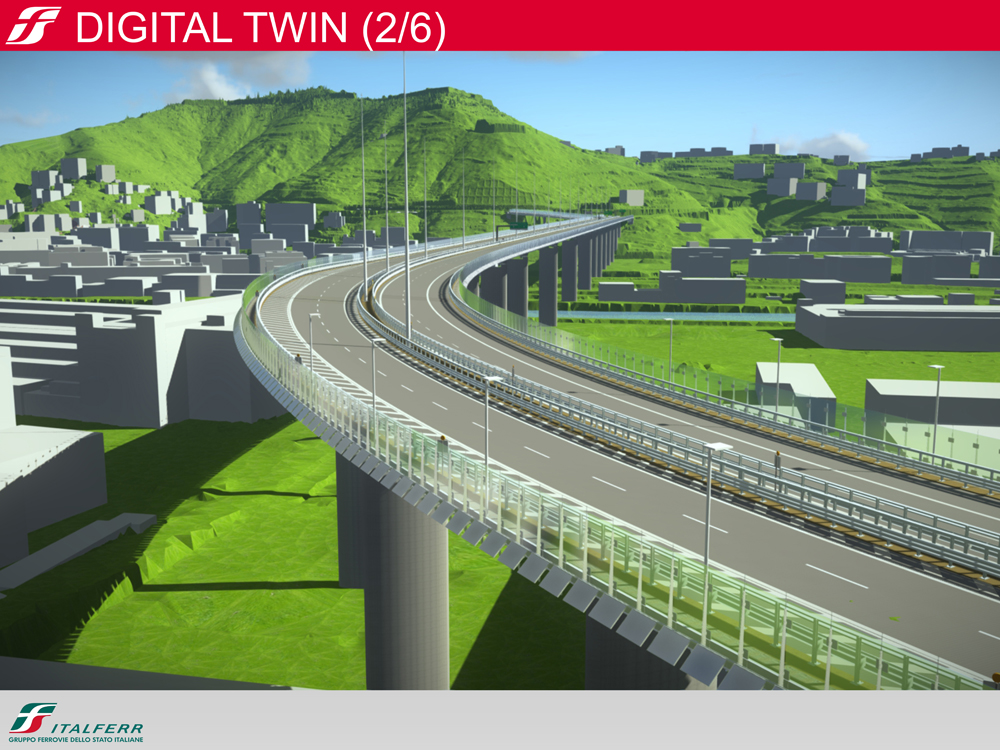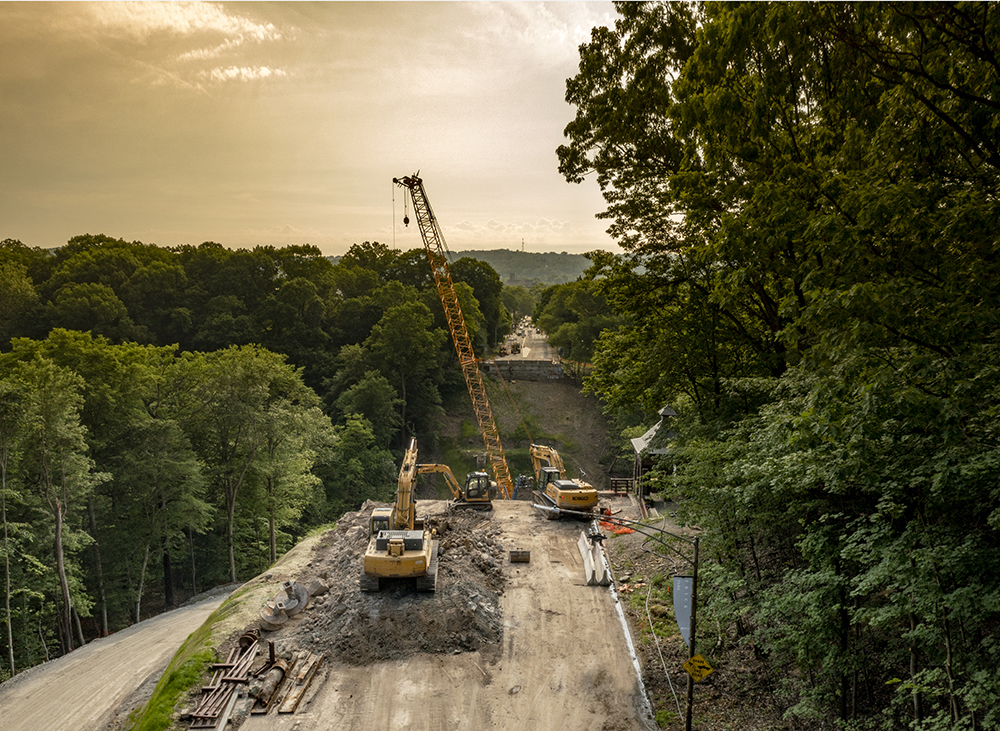
Speed of construction has been the key to a novel bridge replacement project in Pittsburgh, Pennsylvania in the US. Although the bridge itself and the contract to build it are comparatively small, what stands out about this work is how all the partners involved have come together to carry out the work quickly.
Timing, as they say, is everything. US president Joe Biden was visiting Pittsburgh and had planned to give a speech on the need for investment in US infrastructure. Just before he arrived, one of the city’s ageing road bridges collapsed.
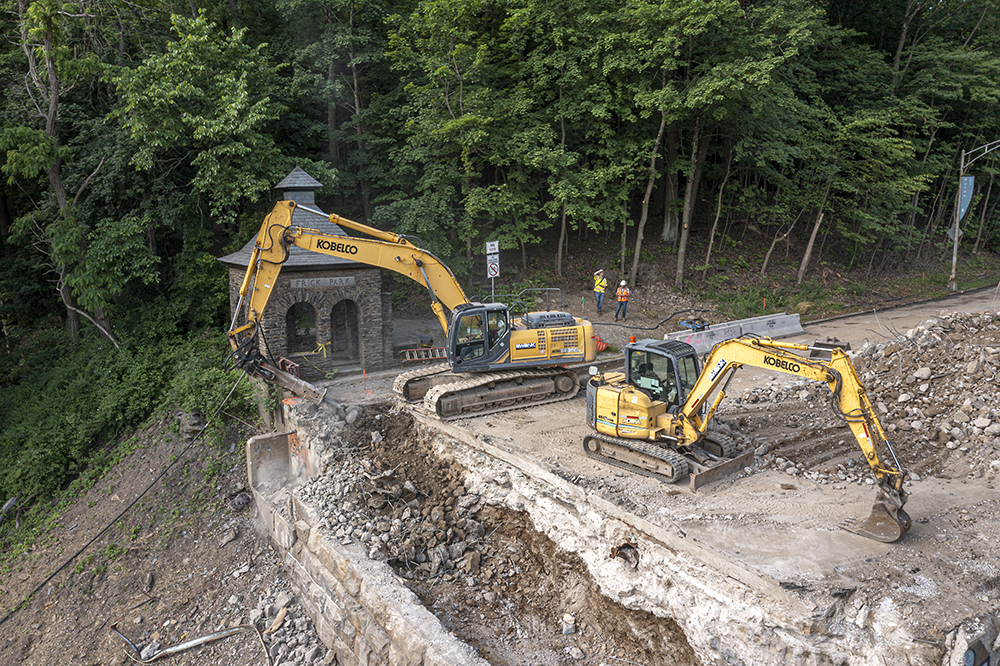
It was extremely lucky that nobody was killed when the Fern Hollow Bridge carrying Forbes Avenue gave way on the morning of 28th January 2022 as six vehicles, including a bus, were crossing the bridge at the time. The bridge collapse resulted in 10 people being injured, three of whom required medical attention in hospital. Emergency responders had to use ropes to climb down 46m to reach the people trapped in the six vehicles amongst the wreckage.
But it is worth noting that the Fern Hollow Bridge failure could have been far worse as the collapse occurred at around 7am in the morning when traffic levels were still low. Had the failure happened at peak traffic levels just an hour or so later, the bridge would have been far busier and carrying many more vehicles while the risks would have been far higher.
Although the bridge is not on a major highway route, it does provide a key transport link. The I-376 highway lies to the south, while the Lincoln Highway is closer still and just to the north. These two other routes carry the major portion of the traffic in the area, but the Fern Hollow Bridge connects with South Braddock Avenue, which links with both the Lincoln Highway to the north and I-376 to the south and also regularly handles emergency vehicles.
Carrying Forbes Avenue over Fern Hollow Creek on the city’s east side, the failed steel bridge was designed in 1970 and opened to traffic in 1973, replacing an earlier structure dating from 1901. However, years of carrying heavy traffic had left its mark and its poor condition was recognised in 2019. Carrying around 21,000 vehicles/day, the 140m bridge featured a rigid K-frame and a 19.5m-wide deck that featured two lanes in either direction.
Although the inadequate condition of the bridge’s deck and superstructure was known prior to the collapse, it was not realised quite how serious the issues were.
A comprehensive report into the cause(s) of the collapse has yet to be released although the NTSB has revealed that the western end of the bridge failed first. Whether or not corrosion or cracking of vital steel components were major factors in the collapse will only become clear once the NTSB’s report is made public.
Replacing the bridge quickly was a key focus for the City authorities but one major challenge to its replacement was bureaucratic. The bridge was the responsibility of the City of Pittsburgh, which did not have the capacity to move as quickly as required. A solution was needed.
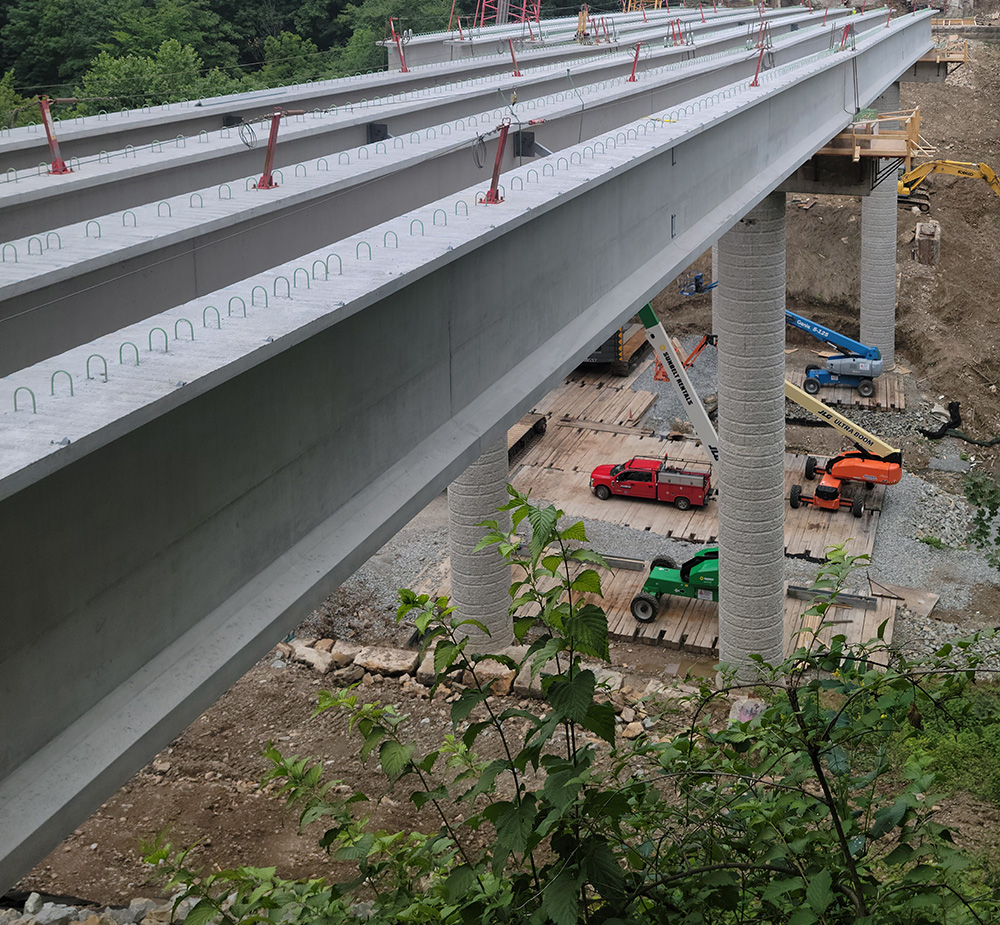
Because US president Biden had already planned his trip to Pittsburgh on that day along with the governor of the state, and given the high profile of the collapse and the attention it received, the replacement project became a priority.
Talks between the city and the state authorities proved fruitful and Pennsylvania Department of Transportation (PennDOT) agreed to handle the replacement project as it had the required experience.
Cheryl Moon-Sirianni, PennDOT’s district executive for the Pittsburgh region, took responsibility for the project at PennDOT. She said that the need to replace the structure was apparent so there was agreement on how to move the work forward between the various authorities in the state. Moon-Sirianni said, “The bridge fell on Friday the 28th and the mayor was looking for assistance.”
There was rapid progress as PennDOT became involved. Assistance from the FHWA helped with the utilisation of emergency procedures as the state governor and city mayor had both enacted Emergency Proclamations.
Just one week after the initial collapse, HDR and Swank had already been brought in by PennDOT as designer and contractor respectively. The project team had worked together previously on other projects, a familiarity that further eased working. The first team meetings between the City, FHWA,HDR, Swank and PennDOT were carried out by the Wednesday, less than a week after the collapse of the bridge. At the same time, the National Transportation Safety Bureau (NTSB) started an investigation into what had caused the collapse of the bridge, with Swank providing assistance. As the demolition work to remove the collapsed structure started, Swank gathered pieces of the wreckage that the NTSB deemed vital to the investigation into the structural failure for further analysis.
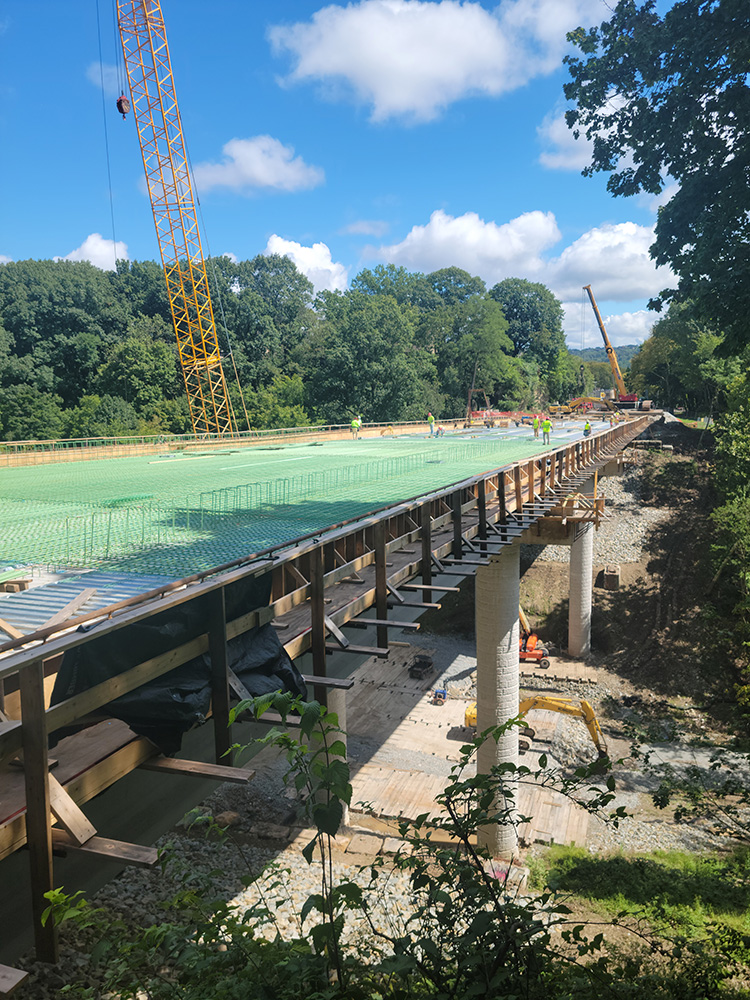
Swank had been working on another project in the area and had some of the necessary equipment near at hand, as well as having experienced personnel. This was extremely fortuitous as it allowed the firm to start work very quickly. Moon-Sirianni commented, “It would’ve been months otherwise.”
Emergency funds, around $25 million, were secured very quickly. One early intention for the bridge replacement was to build a wider structure, although this faced a number of challenges.
The presence of a historic structure, a gatehouse, on the west side of the bridge and a historic neighbourhood in the east meant that building the new bridge wider would be difficult. Jason Fuller is design and project manager at HDR for the project and said, “We didn’t know what the right of way would be. We determined that if we widened anything it would take longer.”
He continued, “Then we got into discussions of bridge types and we looked at options in steel and concrete. We zeroed in on a concrete superstructure as being the most expedient.”
But the construction process was not straightforward due to the location and he said, “Swank was looking at what we could build.”
He said it became clear to HDR and Swank that a four-span bridge would have interfered with the popular Tranquil Trail that runs for some distance along Fern Hollow Creek, ruling it out as an option.
Instead, the design team opted to use a three-span bridge, with 21 concretebeams (seven for each span) supporting a 19.5m-wide concrete deck. The design allows for two slightly narrower traffic lanes in either direction, as well as wider facilities for cyclists and pedestrians.
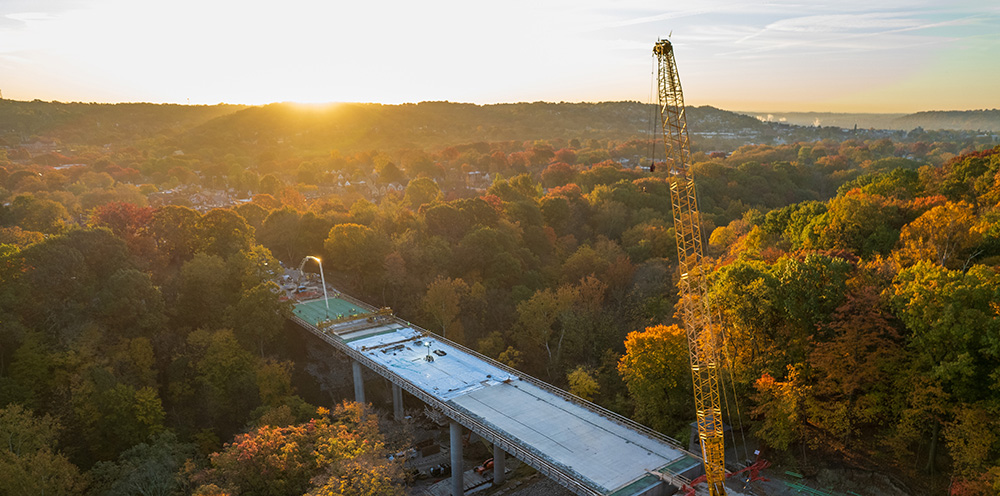
To support the bridge structure, Swank drilled 2.6m diameter shafts down to depths of 9.1m on one side and 12.2m on the other. Rock sockets were employed to secure the foundations. The rig used by Swank for the shafts and abutment deep foundations was Swank’s newly acquired Liebherr LB30.
The aesthetic appearance of the bridge also had to be determined. Time factors played an important role in the decision-making process and Moon-Sirianni said, “We had to look at stuff that would be aesthetic but available off-the-shelf.” She said that formwork for the bridge supports was selected that was obtainable nearby and would provide an appearance similar to the abutments.
Meanwhile, the 42m-long steel beams came from a supplier around 160km away in central Pennsylvania and the transportation of these was a key focus in the discussions. Fuller said, “Getting bridge beams into the area was difficult.”
The beams had to be moved through rural and urban areas, with each weighing around 100tonnes and combined with the weight of the trucks, this meant a gross vehicle weight of 140tonnes. The supplier had to plan the delivery route meticulously as such long and heavy loads could only use certain roads.
The firm delivered 14 of the beams to one side of the project and seven to the other, which was no small task. Moon-Sirianni complimented the drivers of the trucks for showing exceptional skill, having carefully reversed these very long and heavy trailers distances of up to 1,200m. That the 100tonne, 42m-long beams had to be reversed into position did not go unnoticed either. Moon-Sirianni said that around 100 residents were lining the street and cheering as the beams were delivered, pleased that the bridge was being replaced as its absence caused long diversions.
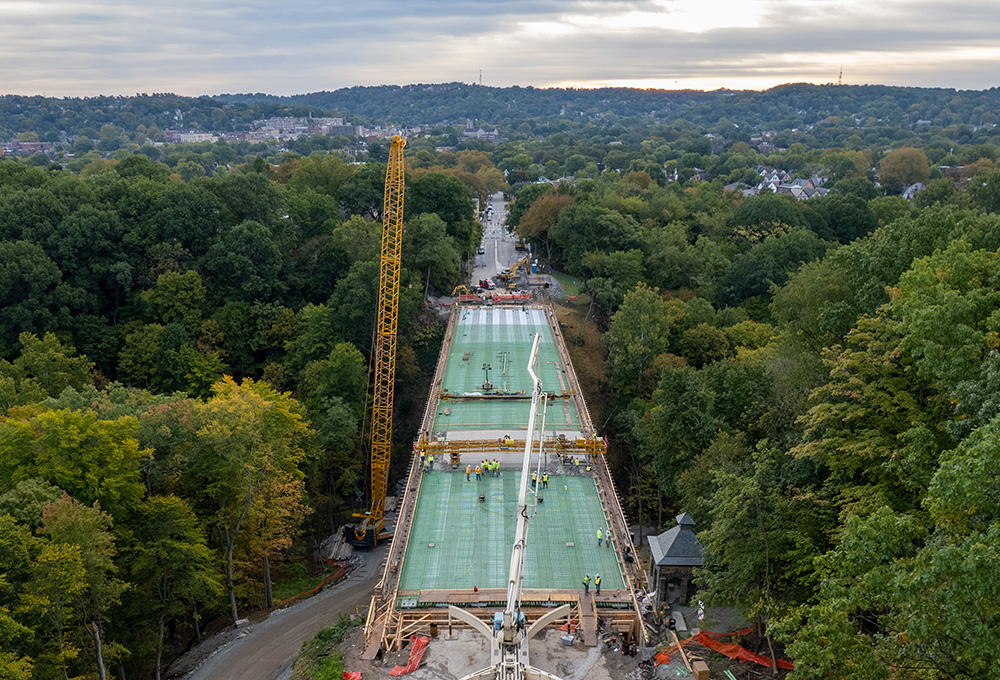
To place the beams, an MLC650 Manitowoc crane was located at the top of the abutment on one side of the gorge. Using a Variable Position Counterweight (VPC), the crane was rigged for loads of 700tonnes. It was positioned on both of the abutments to lift the beams into place for Span 1 and Span 3 and also assisted with the lifting operation for Span 2. However, just getting the crane to the site was an effort in itself as the machine required around 40 trucks to carry all of its components to the first abutment. Once it had carried out the required lifting operation at the first location, it then had to be disassembled so it could be transported to the other side of the gorge from where it could lift in the remaining concrete beams.
Meanwhile, an MLC300 Manitowoc crane had to be moved down into the valley to carry out work for the middle span. This machine was also equipped with a VPC system, allowing it a load capacity of 315tonnes and along with the larger MLC650, assisted with positioning the beams for Span 2. Moon-Sirianni said, “It was quite a feat to get it down the access road. It was a 30% gradient!”
The access road had to be built specially for the project but will be removed and the park area underneath the bridge will be restored when the construction work has been completed. Two other smaller cranes, a Liebherr and a Manitowoc, were used to assist the larger machines.
Once the concrete beams were in place, the concrete deck structure could be built. The 1,119m3 of concrete used for the deck itself was supplied using three Schwing concrete pumps with boom lengths of 32, 36 and 58m. A Bid-Well 3600 bridge deck finisher was then used for the surface work. In addition, a further 176m3 of concrete was used for the bridge barriers.
The bridge features a 200mm-thick concrete deck as well as a 25mm-thick epoxy polymer concrete surface layer. This special polymer layer is a novel feature for bridge construction in Pennsylvania and is intended to provide protection for the steel reinforcement and concrete in the deck against the salt used for de-icing during winter weather. Fuller said, “It’s probably the first bridge in the city with this layer.”
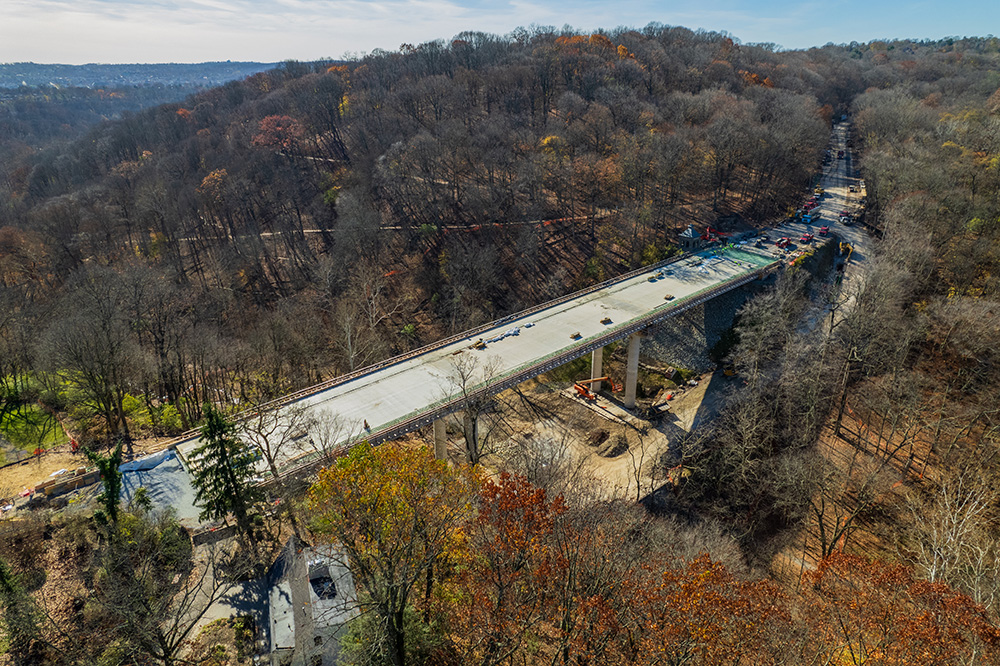
The speed with which the bridge has been designed and built is phenomenal and Moon-Sirianni commented, “Normally a local bridge like this from conception to completion would take at a minimum five years.”
The city authorities (and residents) have been delighted with the progress on the project and Fuller said, “They were amazed at the speed of the contract.”
Fuller and Moon-Sirianni agreed that the way the various parties involved came together was a key factor in the success of the work. She said, “This design could not have happened had there not been trust between HDR, Swank, PennDOT and the City. That allowed us to expedite the project.”
It was not plain sailing and Moon-Sirianni said, “We were going through supply issues in the area.” But she added that by opting for a conventional design and using available materials and components, the project was able to move forward swiftly.
Another fortuitous development was that Swank had just bought its new Liebherr drilling rig shortly before the project started and the machine could be brought to site quickly to start work.
The design and construction personnel from HDR and Swank have made massive progress with the project, managing to have the bridge with one lane open in either direction before the Christmas break. However, considerable work still has to be carried out, including installation of the lighting. By early summer, the bridge will be fully operational with two lanes in either direction.
Ageing bridges in the US
The failure of the bridge highlighted the poor state of many bridges in the US. A report by the American Road Transportation and Builders Association (ARTBA) shows just how desperate is the need for infrastructure improvements in the US. According to ARTBA chief economist Dr Alison Premo Black, 43,578 bridges in the US are classed as structurally deficient.
ARTBA’s analysis of data from the US Department of Transportation (DOT) 2021 National Bridge Inventory (NBI) database highlights that 224,000 US bridges either need repair or replacement. The report finds that 78,800 bridges in the US should be replaced, while just 48% of the 619,588 bridges in the US are rated in fair condition. The total cost of necessary repairs or bridge replacement works has an estimated cost of US$226 billion.
The US states with the largest number of bridges in poor condition are: Iowa (4,504), Pennsylvania (3,198), Illinois (2,405), Oklahoma (2,296), Missouri (2,218), New York (1,672), Louisiana (1,631), California (1,493), West Virginia (1,490), and Ohio (1,334).
The US states and territories with the most bridges in poor condition as a percentage of their total bridge inventory are: West Virginia (20%), Iowa (19%), Rhode Island (17.5%), South Dakota (17.3%), Pennsylvania (13.8%), Louisiana (12.7%), Maine (12.6%), Puerto Rico (12.1%), North Dakota (11.2%), and Michigan (11%).



